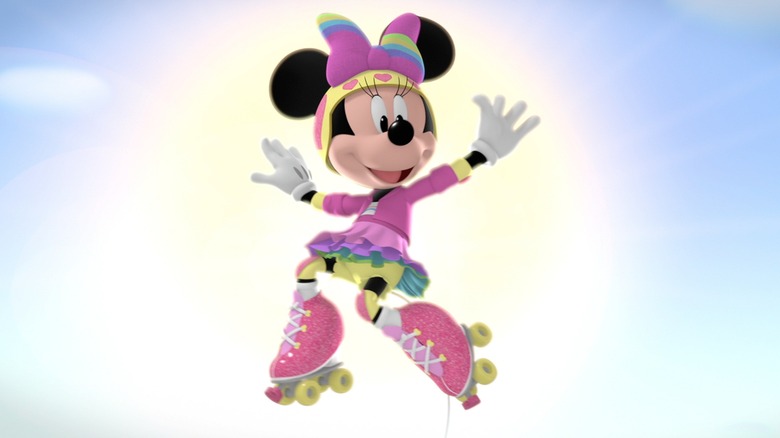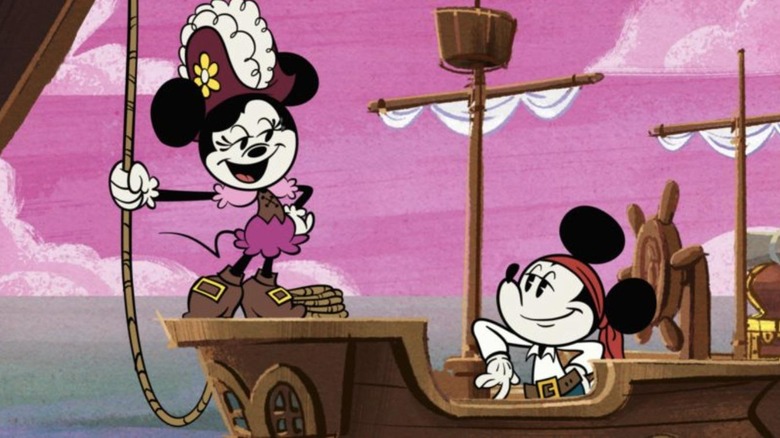The Voice Actor Behind Minnie Mouse Uses These Two Anchors To Get Into Character [Exclusive]
For more than three decades, voice actor Russi Taylor voiced the much-beloved Disney character Minnie Mouse, becoming one of the defining characters in American childhood for decades. After Taylor passed away in 2019, Kaitlyn Robrock took over the role. Taylor had been one of Robrock's heroes growing up and taking on the role to continue the grand legacy of Minnie Mouse was a dream come true. With dreams, though, come incredibly high expectations, and when you're working for Disney the expectations are so high sometimes that they seem nigh impossible to achieve.
Stepping into the shoes of such an iconic vocal role like Minnie Mouse carries with it huge pressure. With a character that's been around for decades, there's a memory we have of Minnie Mouse's voice that still lingers. The challenge of anyone taking on a role like this is audiences will quickly sense a disturbance in the Force if things change even slightly. The wrong pitch, the wrong tone, and pitchforks will be out and ready to attack. Even more so in this day and age where audiences feel a particular ownership and protectiveness over certain roles and shows.
Developing a toolbox of tips and tricks to slip into the Minnie Mouse voice, or any character voice really, has become essential for Robrock in getting into Minnie Mouse fighting form. Her tricks for getting into character make the most sense in the world, especially for anyone with a vocal performance background.
Just listen
Much of Robrock's approach to learning the voice of Minnie Mouse came down to listening, studying, and finding those lines, or hooks, that allowed for a seamless vocal transition. In /Film's interview with Robrock, she revealed the specifics she picked up on when listening to Taylor's interpretation of Minnie Mouse, and also which sentences she used as hooks to get her into the vocal headspace of the character:
"When I would study Russi's interpretation of it, I noticed a lot of the vocal nuances. So she had a nasality to her, especially on her Ms and her Ns. She scoops up, she scoops down, she can crackle into vowel starting words, vaudevillian singing, wavering, and just knowing how much love is within her. So I always think of the hook lines of like, 'Oh, hello. I'm so happy to see whoever you are. I'm happy you're here.' So knowing she's happy no matter who she meets, and knowing that no matter what, she'll always love Mickey, those are the two big things that I slide into."
For aspiring and current voice actors, listening is the best tool you have in your arsenal. Robrock's breakdown is clear and concise, and her note about the hook lines is also a great lesson in how to help transition into a voice. These tools have successfully helped Robrock in her role as Minnie Mouse, so that the character can continue to entertain kids for many years to come.

